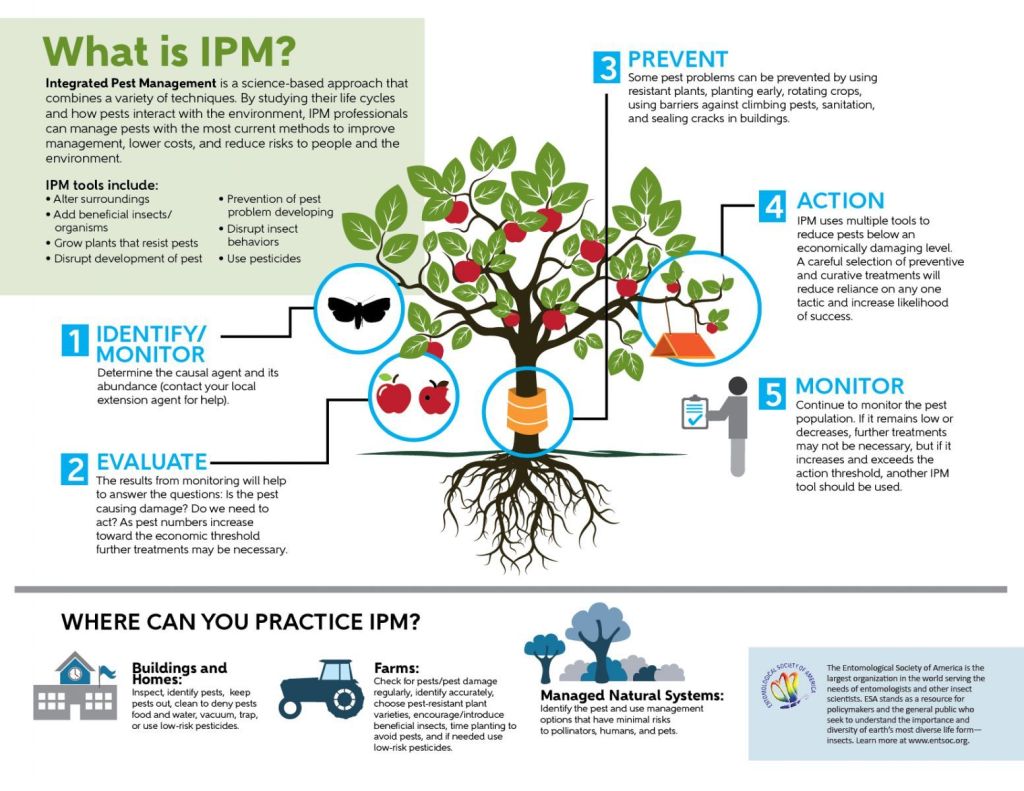Integrated Pest Management (IPM) is a sustainable approach to managing pests that aims to minimize the use of chemical pesticides and prioritize ecological balance. It focuses on prevention, monitoring, and control strategies that are effective yet environmentally friendly. Whether you’re a rural homeowner or a homesteader, implementing IPM techniques can help protect your crops, livestock, and property from pest damage without harming beneficial insects or contaminating the environment.
The first step in IPM is prevention. By creating healthy growing conditions for plants and animals, you can reduce their susceptibility to pests. This includes proper soil management, crop rotation, planting resistant varieties, providing adequate water and nutrients, and maintaining good sanitation practices. For example, removing weeds regularly can prevent them from harboring pests or competing with crops for resources.
Monitoring plays a crucial role in IPM by helping identify potential pest problems early on. Regularly inspecting plants and animals for signs of infestation or disease allows you to take action before the problem becomes uncontrollable. Monitoring methods include visual inspection of plants for chewed leaves or discolored spots as well as using traps to catch flying insects or rodents.
When pests are detected during monitoring, it’s important to correctly identify them before taking any action. Not all insects are harmful; some may even be natural predators that help control other pests. By knowing which species you’re dealing with, you can choose appropriate measures accordingly.
Control measures within an IPM program range from mechanical methods like handpicking pests off plants to cultural practices such as introducing beneficial insects that prey on harmful ones. Biological controls like nematodes or bacteria specific to certain pests can also be utilized effectively without causing harm to other organisms.
If non-chemical methods prove insufficient in controlling pest populations adequately enough, then chemical intervention may become necessary but should always be used as a last resort in an IPM approach. If chemicals are needed though they should be selected carefully and applied according to label instructions. This will help minimize their impact on non-target organisms and the environment.
Education and awareness are key components of IPM. Staying informed about pests common to your region, their life cycles, and behavior can aid in implementing preventive measures more effectively. Many agricultural extension services or local gardening clubs offer resources, workshops, or even pest identification services that can assist you in developing an effective IPM plan.
Implementing an integrated pest management program takes time and effort but ultimately offers long-term benefits for both the environment and your homestead. By reducing reliance on chemical pesticides and prioritizing ecological balance, you’ll create a healthier ecosystem that supports sustainable agriculture practices while protecting your crops, livestock, and property from pests.
In conclusion, Integrated Pest Management (IPM) is a holistic approach to managing pests that emphasizes prevention, monitoring, and control strategies while minimizing the use of chemical pesticides. By creating healthy growing conditions for plants and animals through proper soil management, crop rotation, planting resistant varieties, sanitation practices, regular monitoring for signs of infestation or disease becomes easier. When pests are detected early on during monitoring efforts it’s important to correctly identify them before taking control measures which should prioritize mechanical methods like handpicking or cultural practices such as introducing beneficial insects as well as biological controls when necessary. Chemical intervention should always be used sparingly if at all within an IPM program after other methods have been exhausted due to potential environmental risks they pose. Education plays a vital role in successfully implementing IPM by staying informed about regional pest species’ life cycles and behaviors one can better prepare with preventive measures more effectively while many organizations provide resources or assistance for those seeking guidance in this area making it accessible regardless of experience level ultimately offering long-term benefits for both the environment and homestead alike


Leave a comment